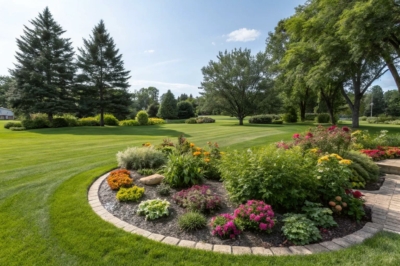1. Rustic and Vintage Elements
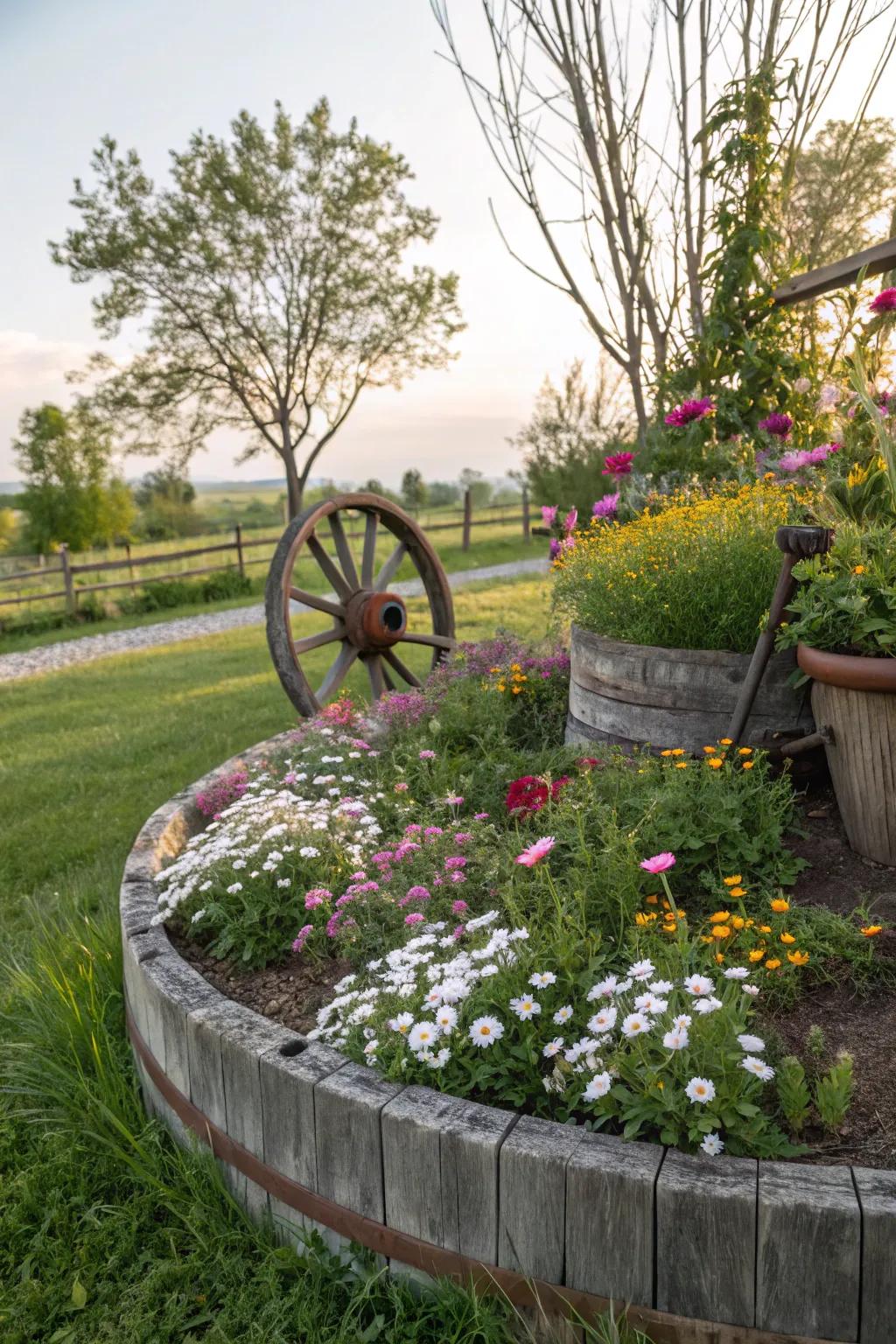
Incorporate rustic features like old wheels or reclaimed wood. These touches give my garden a cozy, nostalgic vibe that’s truly unique.
Maybe worth checking out:
- Decorative Vintage Wagon Wheel: Add a charming rustic touch to your garden with this classic vintage wagon wheel feature.
- Reclaimed Wood Garden Planter: Enhance your garden’s rustic charm using this stylish reclaimed wood planter.
- Antique Metal Watering Can: Bring nostalgia to life with an antique-style metal watering can, perfect for watering plants.
2. Edible Flower Bed
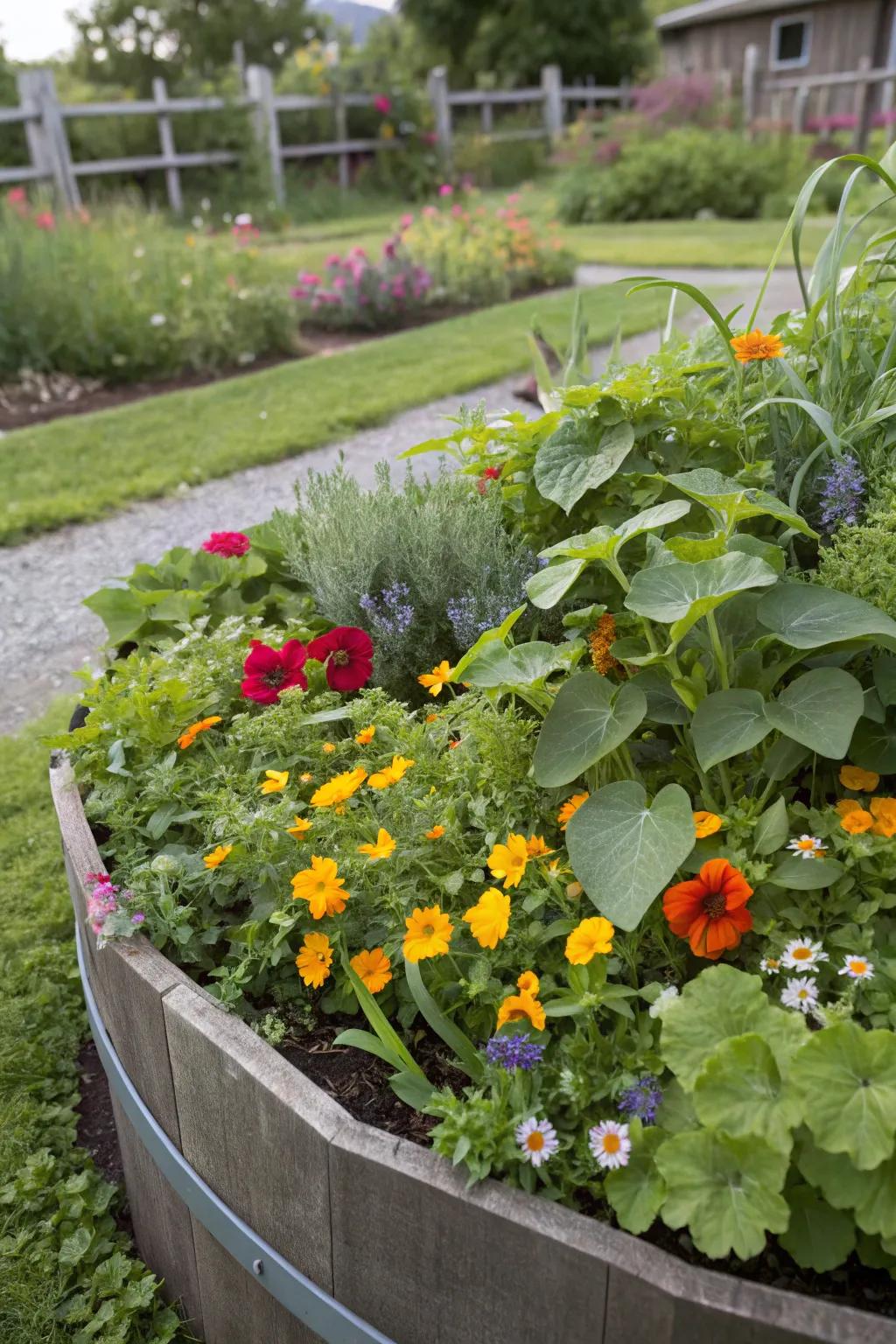
Plant an edible flower bed to enjoy both beauty and flavor. It’s a delightful way to combine aesthetics with culinary use.
Some handy options:
- Edible Flower Seed Kit: Start your edible flower garden easily with a seed kit. Perfect for adding beauty and flavor.
- Raised Garden Bed Planter: Enhance your garden layout with a raised planter. Ideal for showcasing edible flowers beautifully.
- Organic Fertilizer for Flowers: Boost your edible flowers’ growth with organic fertilizer. Ensure vigorous blooms for culinary use.
3. Metal and Wood Containers
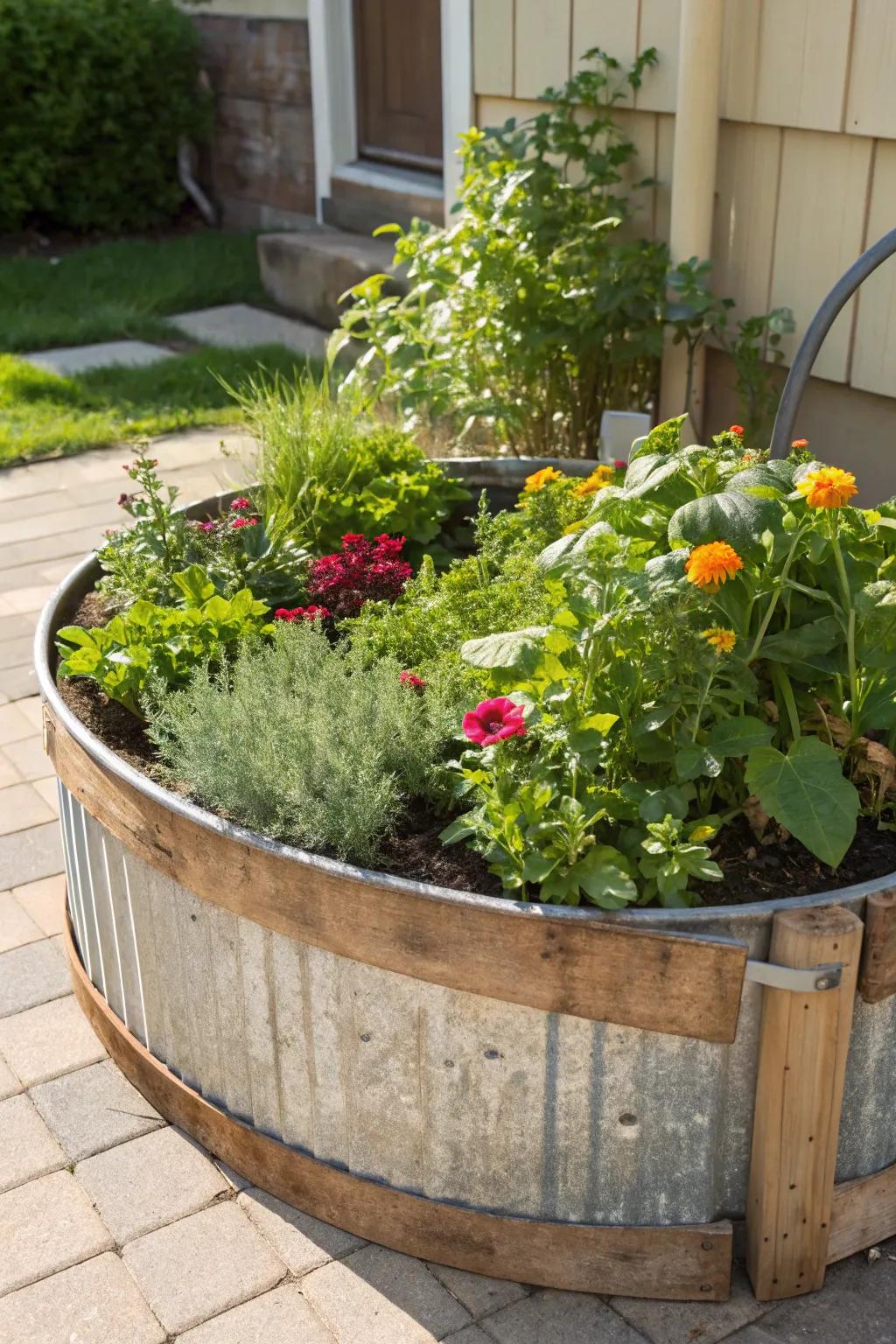
Combine metal and wood for a modern, sleek raised garden bed. I find this combo not only stylish but also durable for all-weather gardening.
A few suggestions:
- Galvanized Metal and Wood Raised Garden Bed: Enhance your garden with a stylish, durable metal and wood raised bed for all-weather planting.
- Metal and Wood Planter Box with Legs: Elevate your planting experience with a modern planter box, combining metal durability with wood elegance.
- Round Metal and Wood Planter: Create a striking garden focal point with a round planter fusing rustic wood and sturdy metal.
4. Combination of Plants
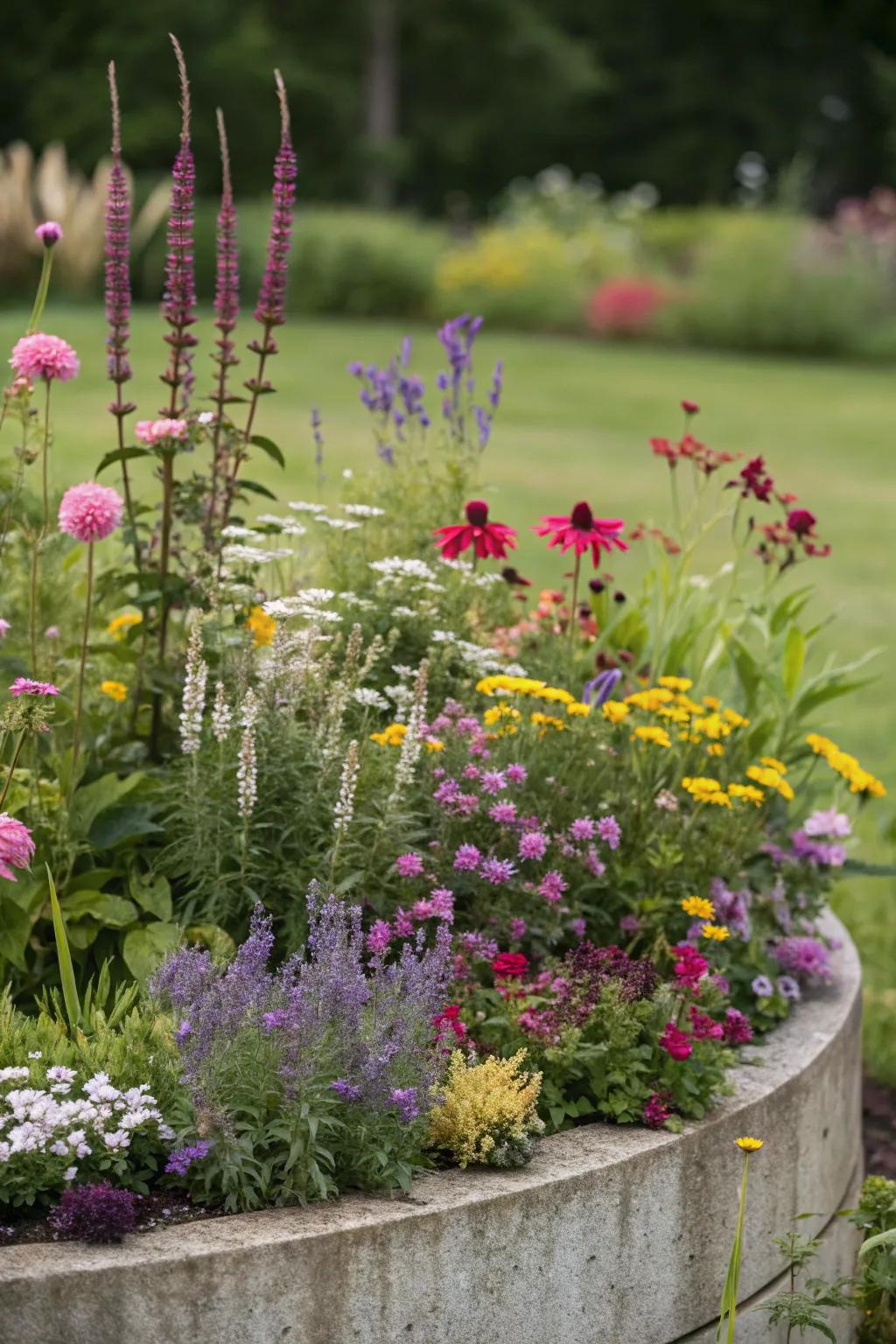
Mix different plants for a textured and colorful display. I love experimenting with various blooms and foliage to create a dynamic garden bed.
Possibly helpful picks:
- Assorted Flower Seed Pack: Transform your garden with a range of vibrant blooms and foliage. Add color effortlessly!
- Garden Soil Mix: Boost your plants’ growth with nutrient-rich soil for a thriving, colorful garden bed.
- Garden Fertilizer: Enhance your garden’s health and vibrancy with easy-to-use, balanced plant fertilizer.
5. Fairy Garden

Create a miniature fairy garden within your circular bed. It adds a whimsical touch that delights both kids and adults alike.
Try these:
- Miniature Fairy Garden House: Enhance your fairy garden with a charming house that sparks imagination and delight.
- Fairy Garden Figurines Set: Add whimsical characters to your fairy garden, creating a magical, enchanting atmosphere.
- Fairy Garden Pathway Stones: Create enchanting paths with decorative stones, guiding fairies and visitors through your garden.
6. Herb Circle
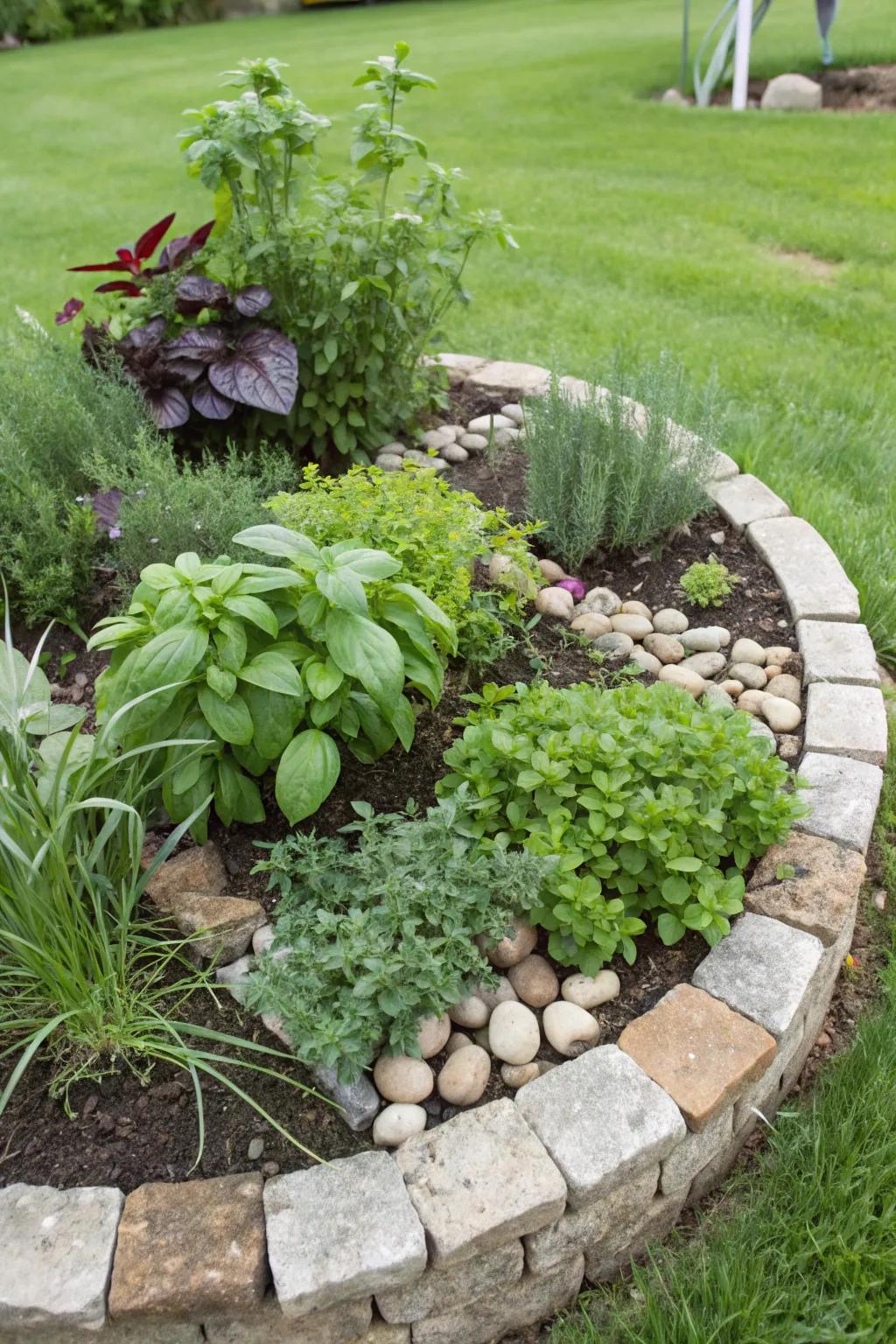
Craft a simple herb circle for a useful and fragrant garden spot. I love having fresh herbs ready to snip for cooking.
Check these products out:
- Garden Edging Stones: Define your herb circle beautifully with durable garden edging stones. Enhance your garden’s aesthetic instantly.
- Herb Garden Starter Kit: Start your herb circle effortlessly with an all-in-one herb garden starter kit. Handy and fresh.
- Decorative Garden Pebbles: Add decorative pebbles to your herb circle for a polished and charming look. Elevate garden appearance.
7. Wildflower Wonderland
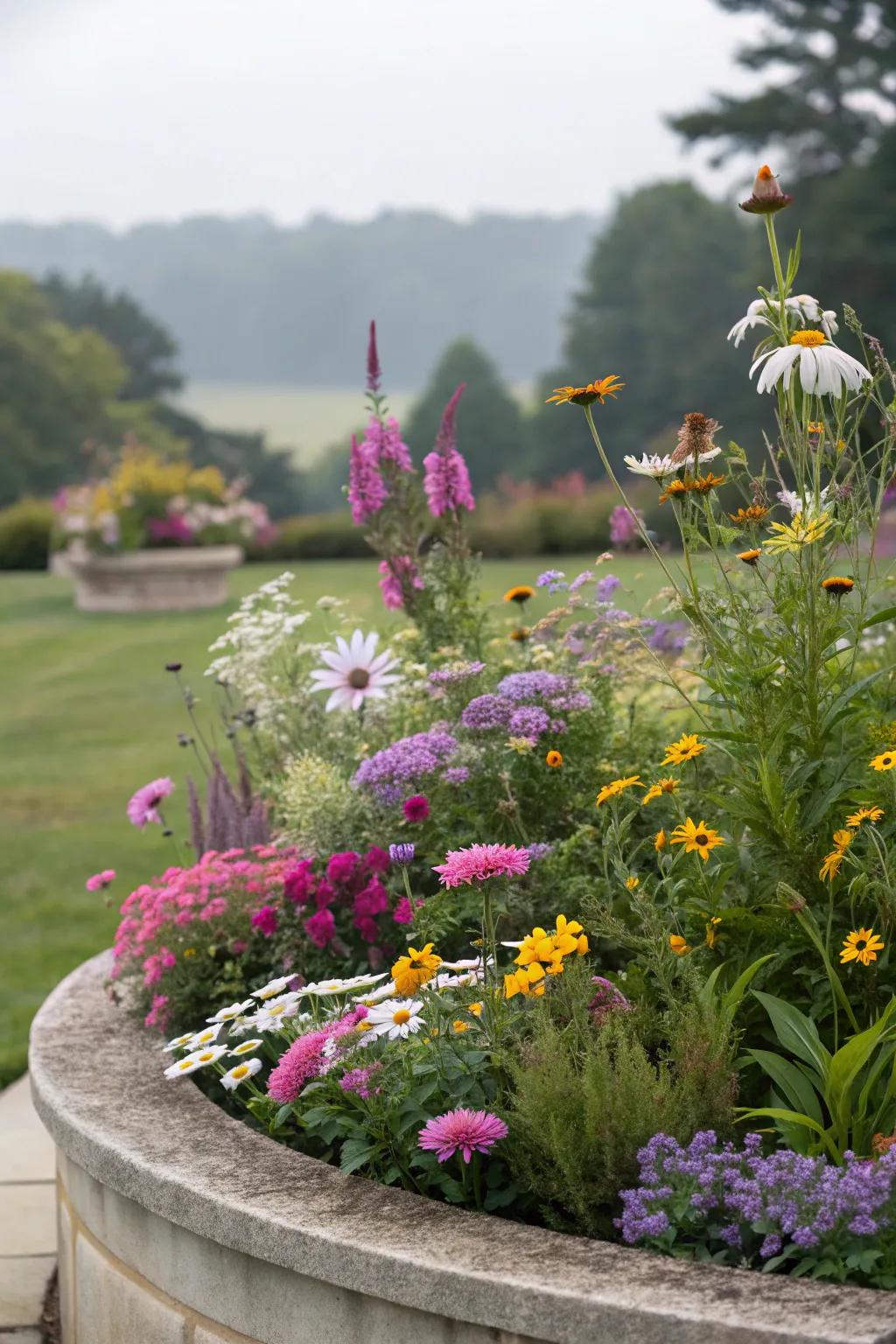
Transform your bed into a wildflower wonderland for a burst of natural beauty. It’s like having a slice of meadow right in your backyard.
You might give these a try:
- Wildflower Seed Mix: Plant a diverse wildflower mix to enjoy vibrant colors and attract pollinators effortlessly.
- Eco-friendly Mulch: Use eco-friendly mulch to retain soil moisture and enhance your garden’s natural beauty.
- Garden Edging Kit: Define your wildflower garden with a durable edging kit for a neat and organized look.
8. Succulent Display
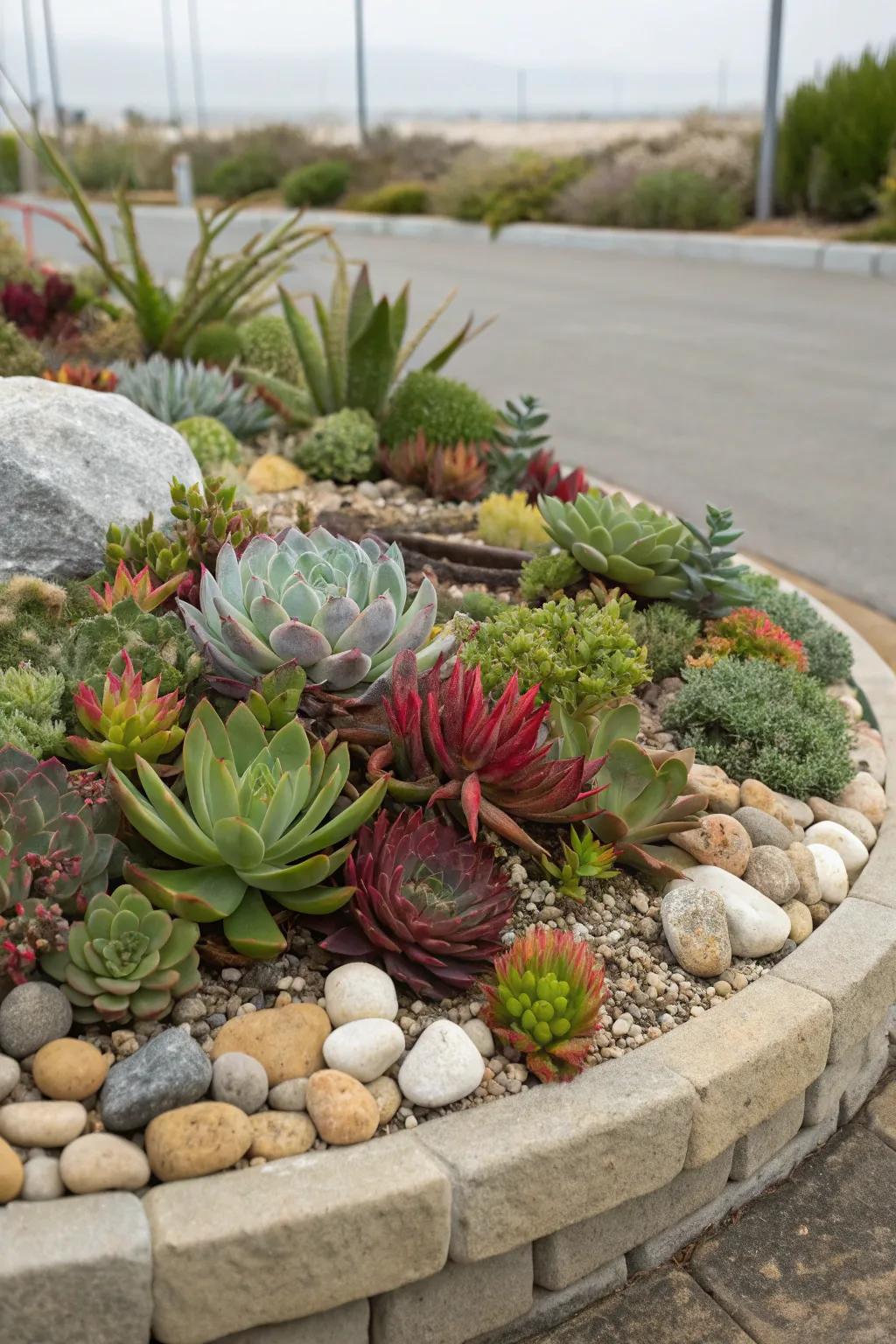
Arrange a succulent garden for a low-maintenance yet stunning display. I love how easy they are to care for, even in the Texas heat!
Might be a good match:
- Succulent Plant Variety Pack: Elevate your garden with a variety of vibrant, low-maintenance succulents. Perfect for any climate.
- Decorative Garden Pebbles: Enhance your succulent bed with stylish decorative pebbles for a polished, natural look.
- Round Raised Garden Bed Kit: Create an organized garden space with ease using this durable, round bed kit.
9. Stone Borders
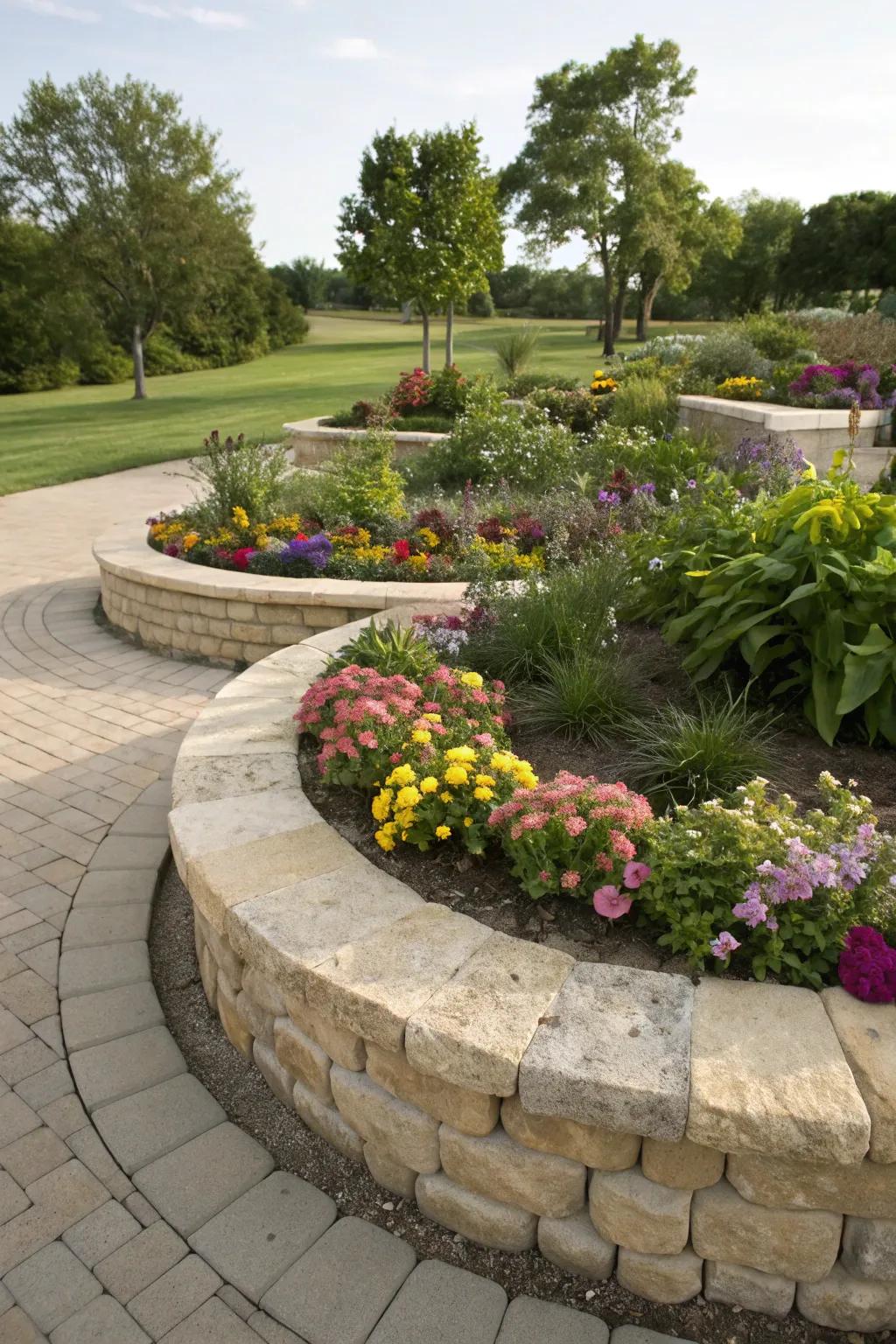
Use stone edging to define your round garden bed and give it a classy touch. Personally, I love the rustic charm it adds to the garden.
A few things you might like:
- Natural Stone Edging: Enhance your garden with durable natural stone edging for a rustic and elegant look.
- Garden Edging Fence Stones: Create clearly defined garden beds with decorative stone fence edging that blends seamlessly with nature.
- Curved Stone Border Kit: Easily outline your round garden beds using versatile and stylish curved stone border kits.
10. Mulch and Rock Fill
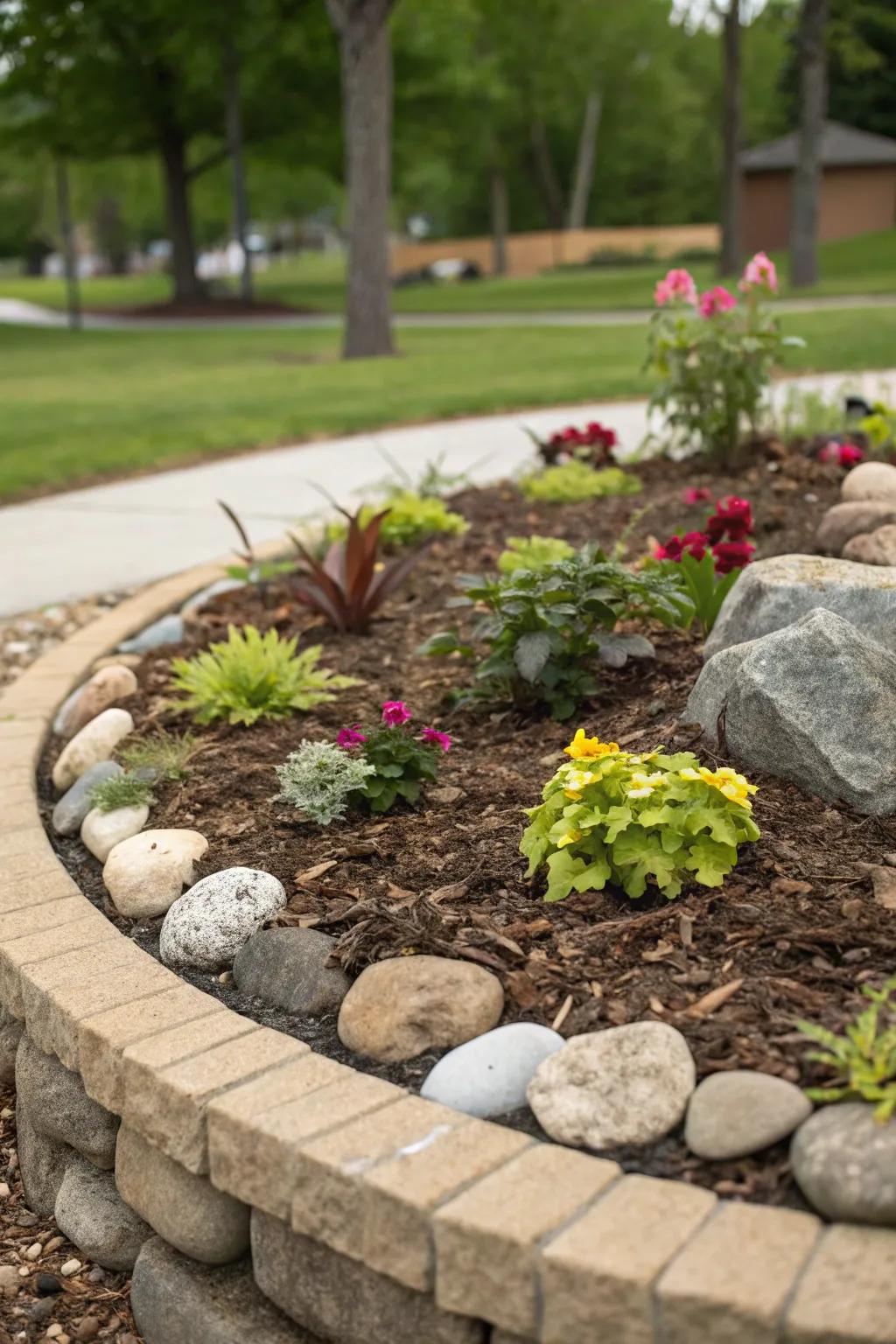
Enhance visual appeal with mulch or decorative rocks. It’s an easy way to add texture and keep weeds at bay, something I’ve found incredibly useful.
You might like:
- Decorative Garden Mulch: Transform your garden with decorative mulch, reducing weeds and enhancing soil moisture retention.
- Landscaping River Rocks: Elevate your garden’s look with natural river rocks, adding texture and a natural barrier.
- Garden Edging Stones: Define your garden’s edges with stylish stones, ensuring a clean and organized appearance.
11. Vertical Planting
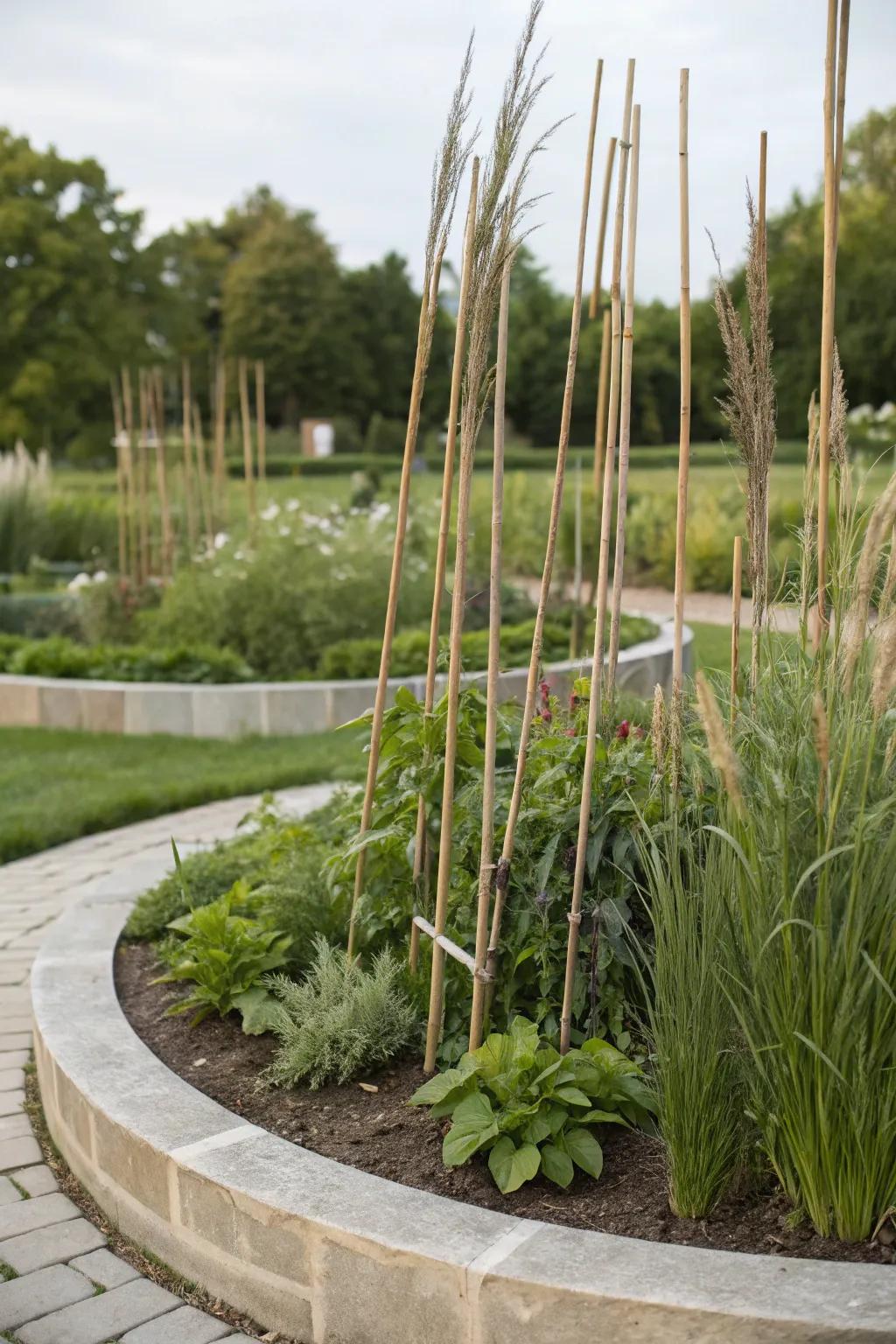
Add height with vertical elements like tall grasses or decorative stakes. In my garden, these features create an impressive visual impact.
May just do the trick:
- Decorative Garden Stakes: Enhance your garden’s height and interest with elegant decorative stakes. Perfect for vertical accents.
- Bamboo Garden Poles: Create stunning vertical structures using natural bamboo poles. Ideal for supporting tall plants.
- Tall Ornamental Grasses: Add lush vertical beauty to your garden with tall ornamental grasses. Perfect for visual impact.
12. Colorful Blooms
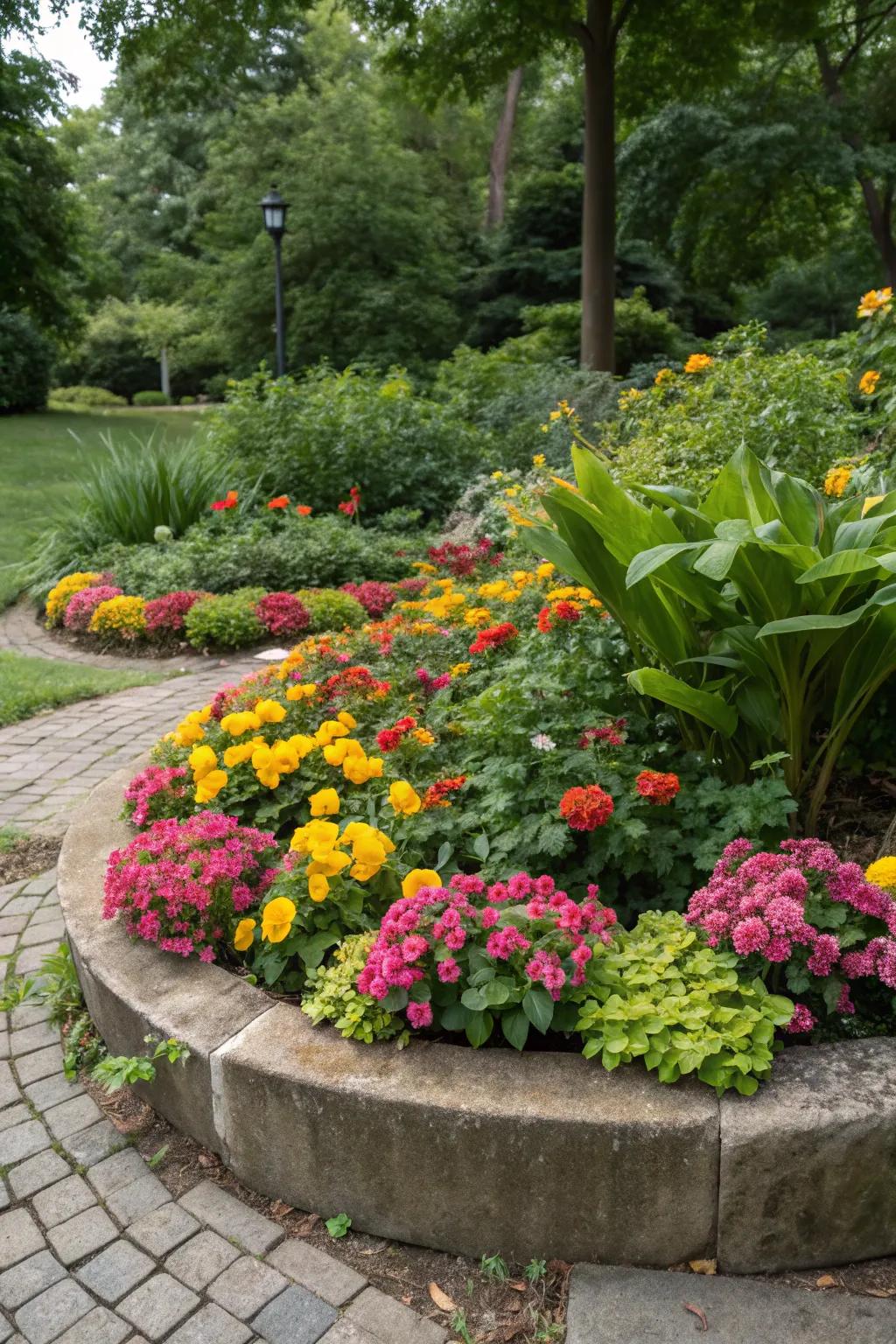
Use vivid colors to create striking contrasts. I always find this adds an exciting burst of energy to my garden spaces.
Possibly handy products:
- Bright Flower Seed Mix: Add vibrant energy to your garden with a variety of colorful, easy-to-grow flowers.
- Garden Flower Fertilizer: Enhance bloom vibrancy and health with this specially formulated flower garden fertilizer.
- Outdoor Plant Markers: Organize and beautify your garden with customizable, weather-resistant plant markers.
13. Rustic Wood Pallets
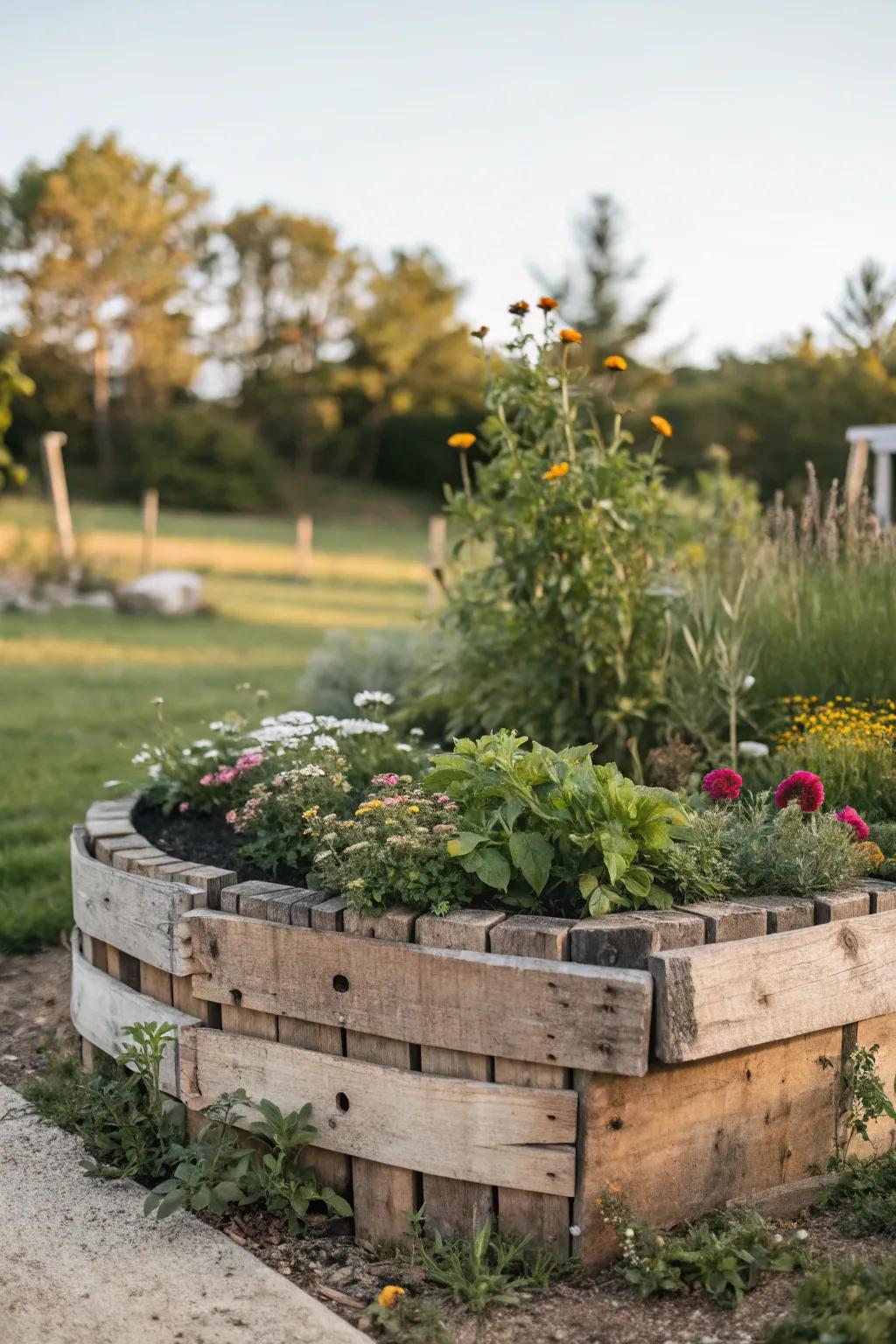
Repurpose wood pallets for a rustic garden bed. It’s a sustainable way to add charm and character, something I always aim for.
A few relevant products:
- Wood Pallets: Transform your garden with rustic wood pallets for sustainable charm and unique character.
- Outdoor Wood Sealer: Protect your rustic garden bed with a durable outdoor wood sealer for lasting beauty.
- Gardening Soil: Enrich your wood pallet garden bed with high-quality soil for lush, healthy plants.
14. Central Features
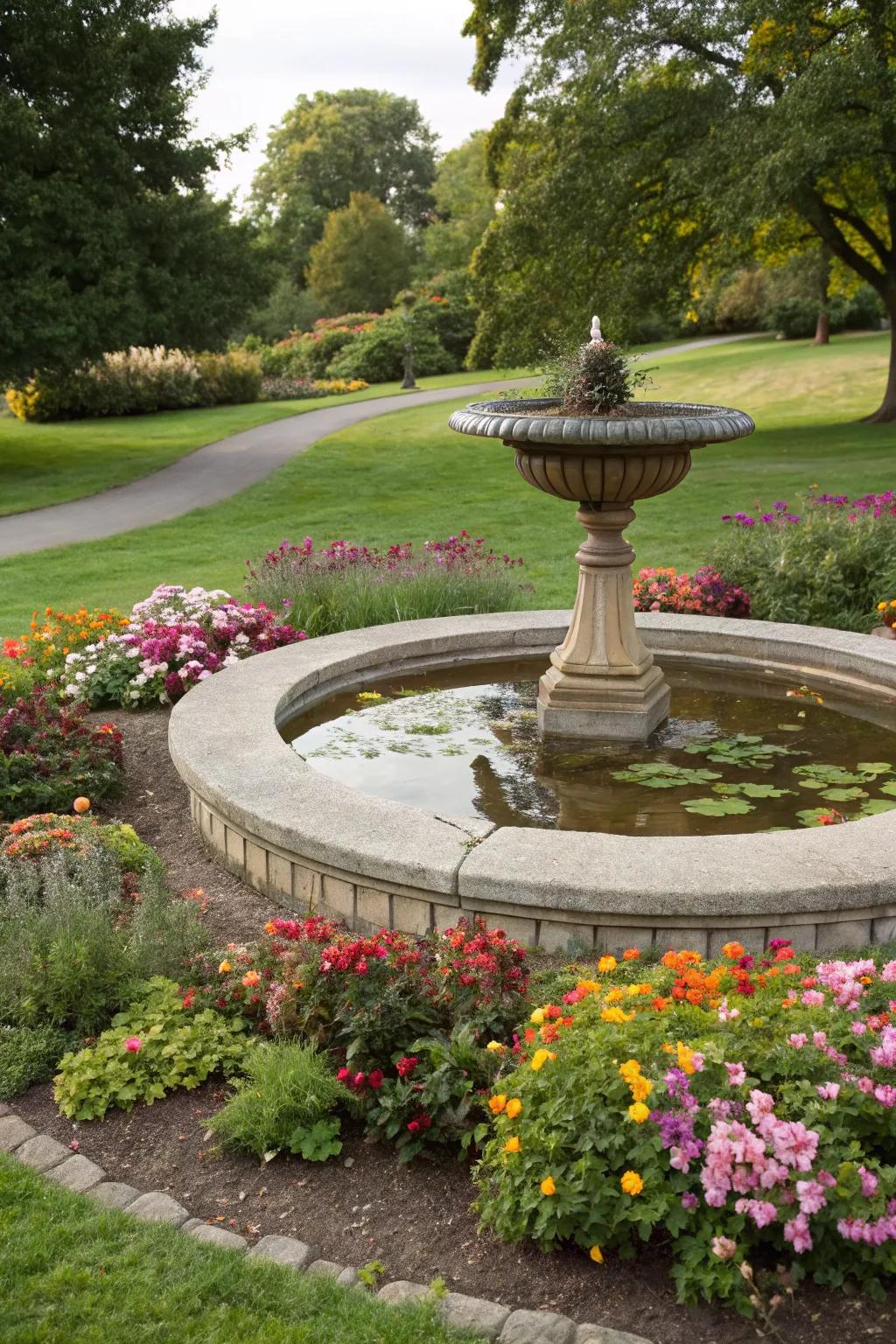
Add a central focal point like a small fountain or sculpture to draw the eye. My garden’s centerpiece is a charming birdbath that invites delightful visitors.
These products might help:
- Outdoor Water Fountain: Elevate your garden’s charm with a tranquil water fountain centerpiece, attracting peace and elegance.
- Decorative Bird Bath: Invite vibrant bird life into your garden with a stylish and enchanting bird bath centerpiece.
- Garden Sculpture: Add artistic flair and intrigue to your garden with a captivating central sculpture piece.
15. Zen Stone Garden
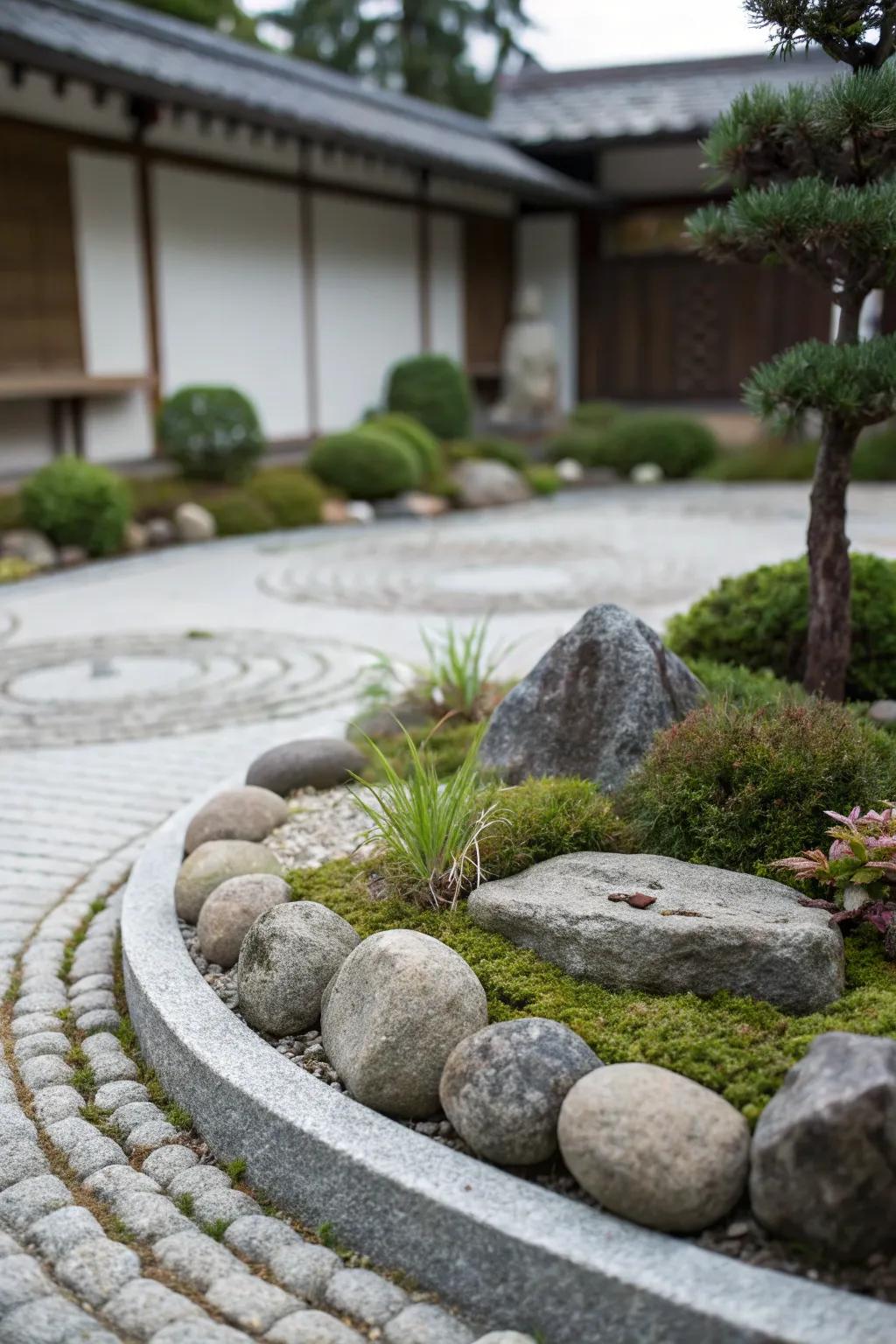
Introduce a Zen stone garden for a tranquil retreat. This has been my go-to for creating a peaceful corner in my yard.
Explore these options:
- Zen Garden Rake Set: Enhance your sanctuary with precise lines using a versatile Zen garden rake set.
- Japanese Stone Lantern: Illuminate your Zen garden with a traditional Japanese stone lantern for a serene ambiance.
- Variety Pack of Garden Moss: Add lush texture to your Zen garden with a diverse pack of vibrant garden moss.
16. Layered Floral Arrangements
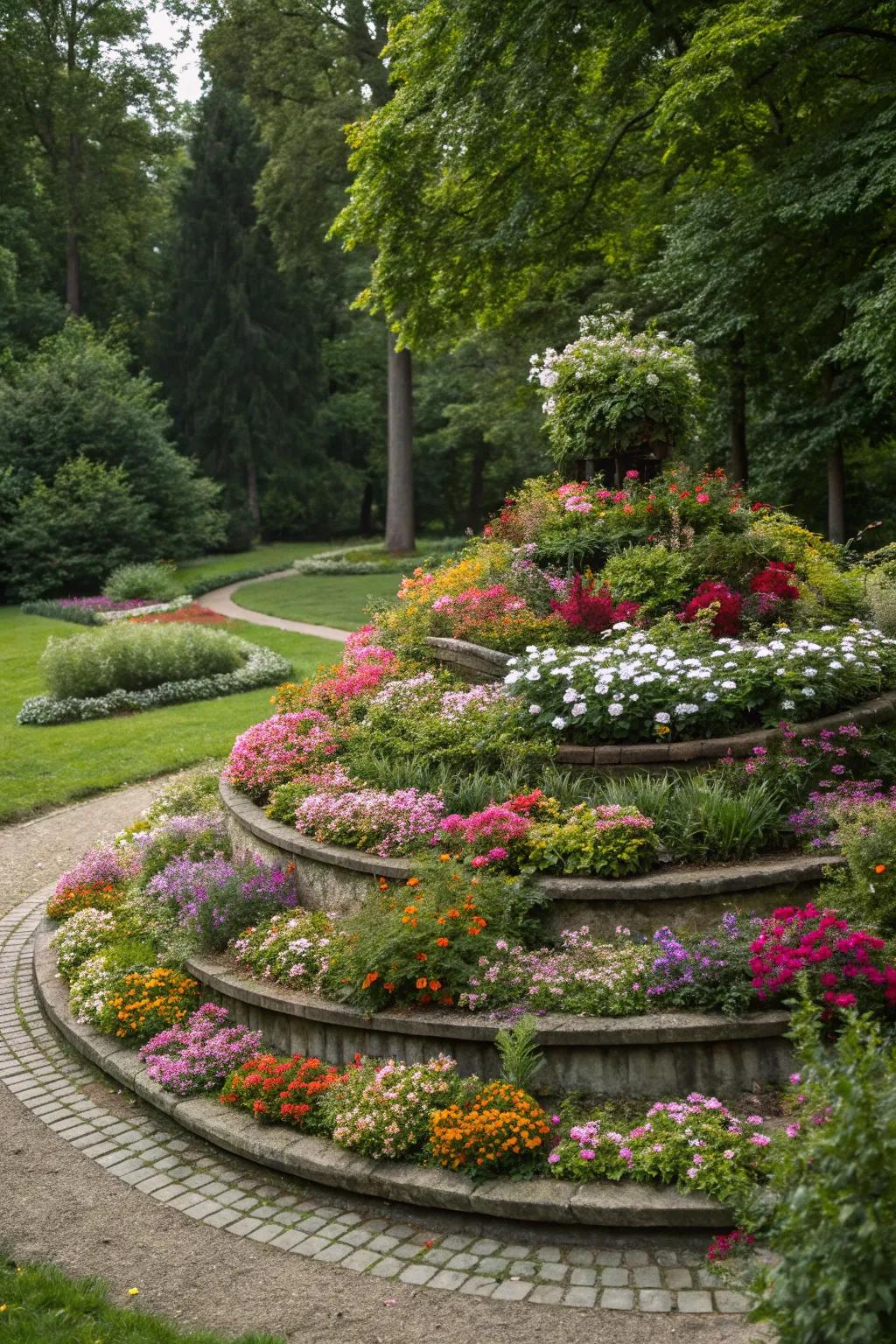
Create a multi-layered effect with colorful blooms to add depth and interest. I’ve tried this in my own garden, and it’s like having a floral cake that never gets old!
Check if these fit your needs:
- Tiered Garden Planter: Enhance your garden with a tiered planter for stunning multi-level floral displays.
- Perennial Flower Seed Mix: Plant a colorful perennial flower mix for blooms that return year after year.
- Soil Moisture Meter: Ensure optimal watering with an easy-to-use soil moisture meter for healthy plant growth.
17. Flowing Design
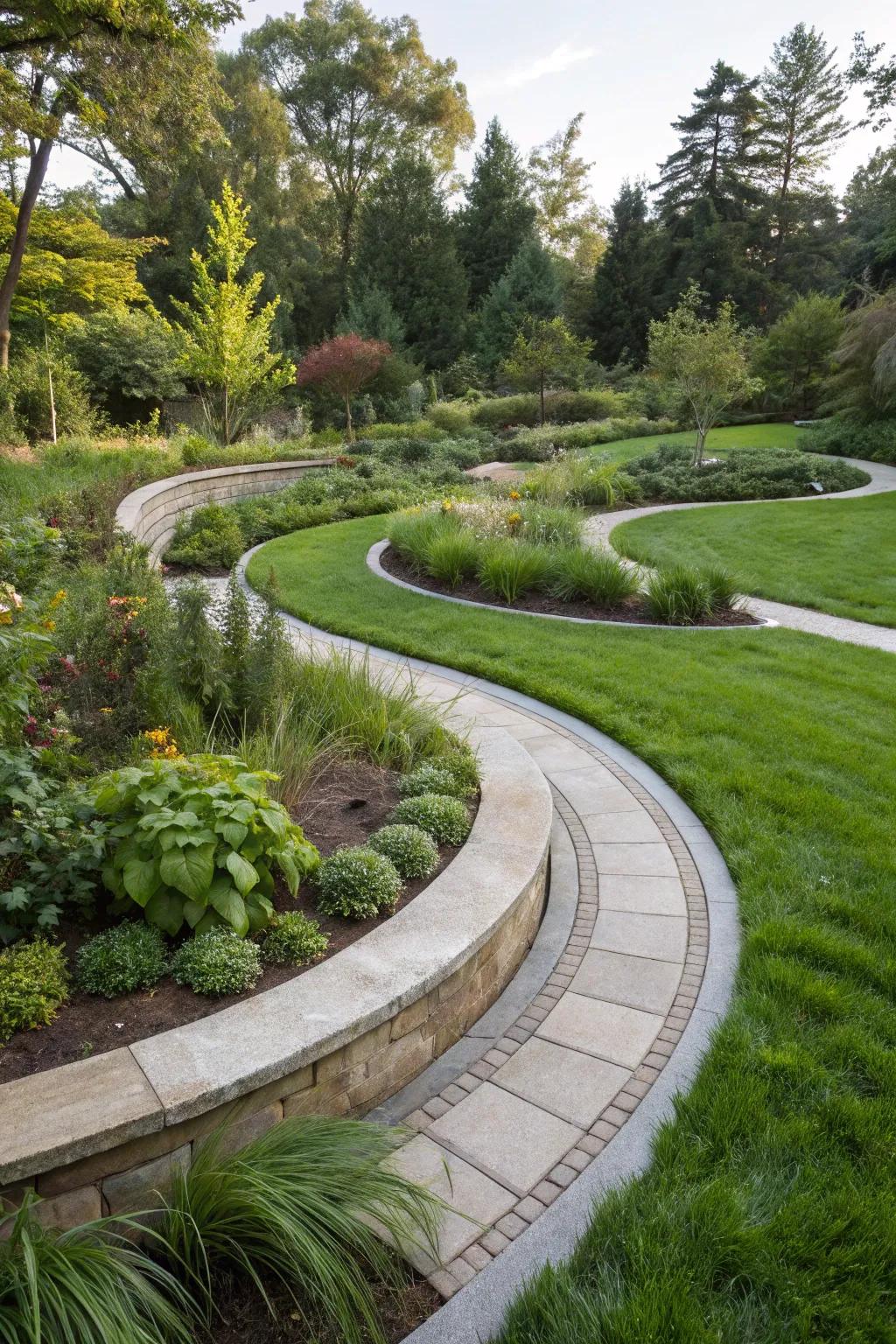
Create a blended design with grass paths or curved lines. This approach helps my garden flow naturally into the landscape.
A few choices to try:
- Garden Path Edging Stones: Define your garden paths beautifully with durable edging stones for a seamless flow.
- Curved Garden Bed Kits: Create harmonious curves in your garden with easy-to-install curved garden bed kits.
- Grass Path Seeds: Enhance your garden flow with lush, natural grass paths using high-quality grass seeds.
